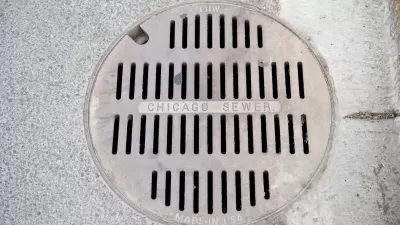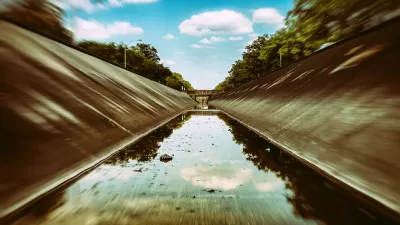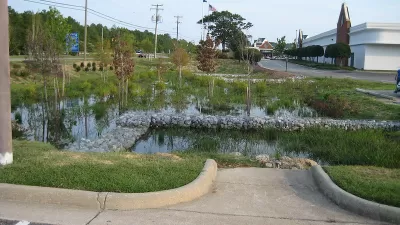Only one coastal city has a sewer system that must handle stormwater as well as wastewater. San Francisco's efforts to adapt its combined sewer-stormwater system has put it on the vanguard of the city's climate adaptation efforts.
"Using combined systems was common practice for urban sewers built before the turn of the 20th century, said [San Francisco Public Utilities Commission] PUC General Manager Harlan Kelly Jr., when wastewater and rainfall both were typically dumped into nearby bodies of water," reports Dominic Fracassa for the San Francisco Chronicle on Oct. 21.
Because the city's sewer system can be easily overwhelmed during heavy downpours, and is vulnerable due to king tides and sea level rise, all of which will become more intense due to climate change, the San Francisco Public Utilities Commission, which provides retail drinking water and wastewater services to the city of San Francisco, is at the forefront of climate adaptation efforts.
The PUC’s improvement program will be rolled out in phases through 2032. The improvements themselves — everything from replacing outdated sewer pipes to raising critical electrical systems in treatment plants in anticipation of the higher sea waters — are designed to respond to how San Francisco’s climate could look in the year 2100.
Another critical element of the PUC plan is an ambitious program of installing bioretention or rain gardens to divert stormwater from the sewer system and allow it to be absorbed into the ground. "[B]y allowing natural processes to take over the work we've been building infrastructure to handle, operations and maintenance costs also fall," according to a 2012 study on green infrastructure co-authored by the American Society of Landscape Architects.
In August, Fracassa reported on a ribbon-cutting by the PUC for the first of the eight rain gardens planned for the Ingleside district, an investment of $7.3 million.
FULL STORY: SF embarking on major projects to bolster sewer system

Alabama: Trump Terminates Settlements for Black Communities Harmed By Raw Sewage
Trump deemed the landmark civil rights agreement “illegal DEI and environmental justice policy.”

Planetizen Federal Action Tracker
A weekly monitor of how Trump’s orders and actions are impacting planners and planning in America.

Why Should We Subsidize Public Transportation?
Many public transit agencies face financial stress due to rising costs, declining fare revenue, and declining subsidies. Transit advocates must provide a strong business case for increasing public transit funding.

Understanding Road Diets
An explainer from Momentum highlights the advantages of reducing vehicle lanes in favor of more bike, transit, and pedestrian infrastructure.

New California Law Regulates Warehouse Pollution
A new law tightens building and emissions regulations for large distribution warehouses to mitigate air pollution and traffic in surrounding communities.

Phoenix Announces Opening Date for Light Rail Extension
The South Central extension will connect South Phoenix to downtown and other major hubs starting on June 7.
Urban Design for Planners 1: Software Tools
This six-course series explores essential urban design concepts using open source software and equips planners with the tools they need to participate fully in the urban design process.
Planning for Universal Design
Learn the tools for implementing Universal Design in planning regulations.
Caltrans
Smith Gee Studio
Institute for Housing and Urban Development Studies (IHS)
City of Grandview
Harvard GSD Executive Education
Toledo-Lucas County Plan Commissions
Salt Lake City
NYU Wagner Graduate School of Public Service





























